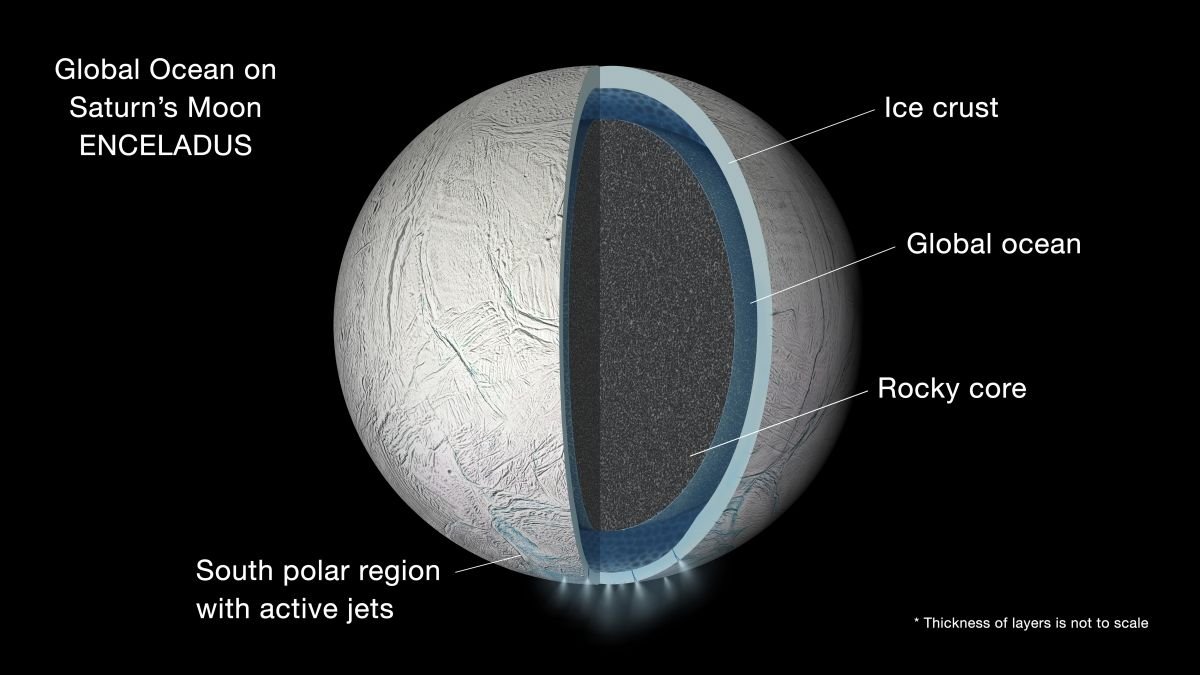
Saturn has more than 50 known moons, according to NASA, but one in particular has captured the attention of scientists: Enceladus. That's because the moon has a global ocean beneath its surface, making it a prominent candidate in the search for extraterrestrial life.
In a statement released on Wednesday, NASA said that its Cassini mission—which has been orbiting Saturn since mid-2004—had analysed seven years' worth of images to measure the extent of the ocean. The research is presented in a study published this week in the journal Icarus.
Previous data had suggested the ocean could be confined to the moon's south polar region. However, by studying the magnitude of the wobble—known as a libration—which the moon shows when it is orbiting Saturn, the team concluded that the liquid ocean likely covers the entire core of the moon.
Matthew Tiscareno, a scientist at the SETI Institute in California working on the Cassini project, says that if the moon's surface and core were connected, "the core would provide so much dead weight [that] the wobble would be far smaller than we observe it to be." The magnitude of the wobble "proves that there must be a global layer of liquid separating the surface from the core," he says.

Enceladus was discovered in 1789 and measures just 500 km (310 miles) in diameter—Earth's moon is almost seven times bigger at 3,475 km (2,159 miles). The surface of Enceladus is peppered with craters and fissures, and in 2006, geysers were spotted shooting out jets of water vapour from the moon's south pole. For years, scientists have been fascinated with Enceladus, because it is believed to be one of just non-Earth two sites in the solar system where it is almost certain that there is liquid water. (The other is Europa, one of Jupiter's moons.) The core of Enceladus contains silicates vital for life, such as phosphorus and sulphur, according to Gizmodo, which—when combined with liquid water—make it a better place than most in the solar system to look for possible life.
Cassini is scheduled to make its deepest dive through Enceladus' icy plumes on October 28, when it will pass just 49 km (30 miles) above the moon's surface. The mission could reveal even more about this tiny yet fascinating moon.
Uncommon Knowledge
Newsweek is committed to challenging conventional wisdom and finding connections in the search for common ground.
Newsweek is committed to challenging conventional wisdom and finding connections in the search for common ground.
About the writer
Conor is a staff writer for Newsweek covering Africa, with a focus on Nigeria, security and conflict.
To read how Newsweek uses AI as a newsroom tool, Click here.





